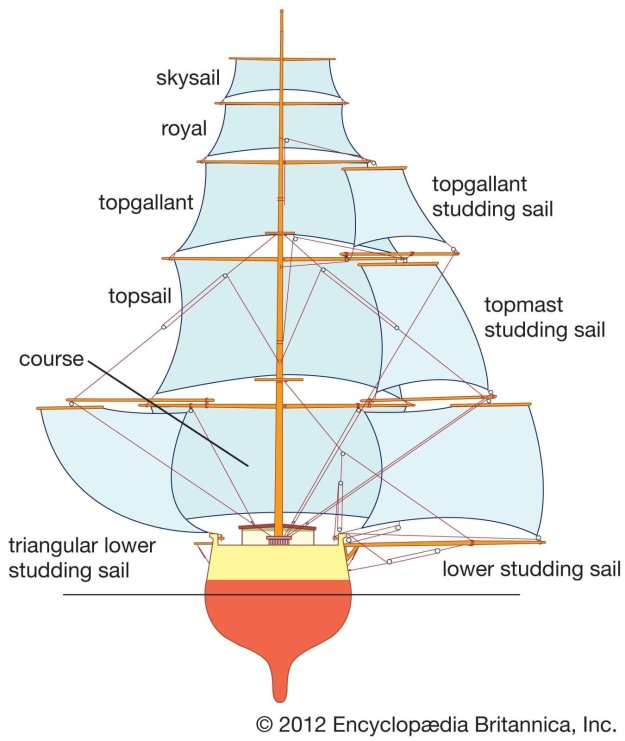Studding Sails
A studding sail, or stun’sl(pronounced stuns’l /ˈstʌnsəl/) is an extra sail on a square rigged vessel for use in fair weather. It is set outside the square sails, using stun’sl booms which run out along the yards.
It is named by appending the word studding to the name of the working sail alongside which it is set, for example, “fore topsail studdingsail”
The origins of studding sails are relatively uncertain. The earliest reference is in 1655, but precise information on how these early examples were rigged is unknown. It is not until 1790 that this is available. Some changes in the detail of design and usage occurred over succeeding years.
All ordinary working square-rigged vessels were usually fitted out to set stun’sls by the start of the 19th century. This started to change in the last quarter of the 19th century. As steamers took over routes and cargoes that needed fast passages, sailing vessels competed by being able to cut costs much more easily. Crew sizes were reduced, so there were fewer experienced hands to set and take in stun’sls. Any ship which pressed on in rising winds risked breaking a stun’sl boom or damaging sails–if the owner had all or some of the stun’sls sent ashore, there was less to break and these repair costs avoided. Clippers on the routes to China continued to race against each other with large crews and full suits of sails (which included stun’sls) until they also had their trade taken over by steamers in the years following the opening of the Suez Canal in 1869. As these ships took other routes, most of them had the same economies applied.
Info Wikipedia








Here’s an excellent shot!!! ..

